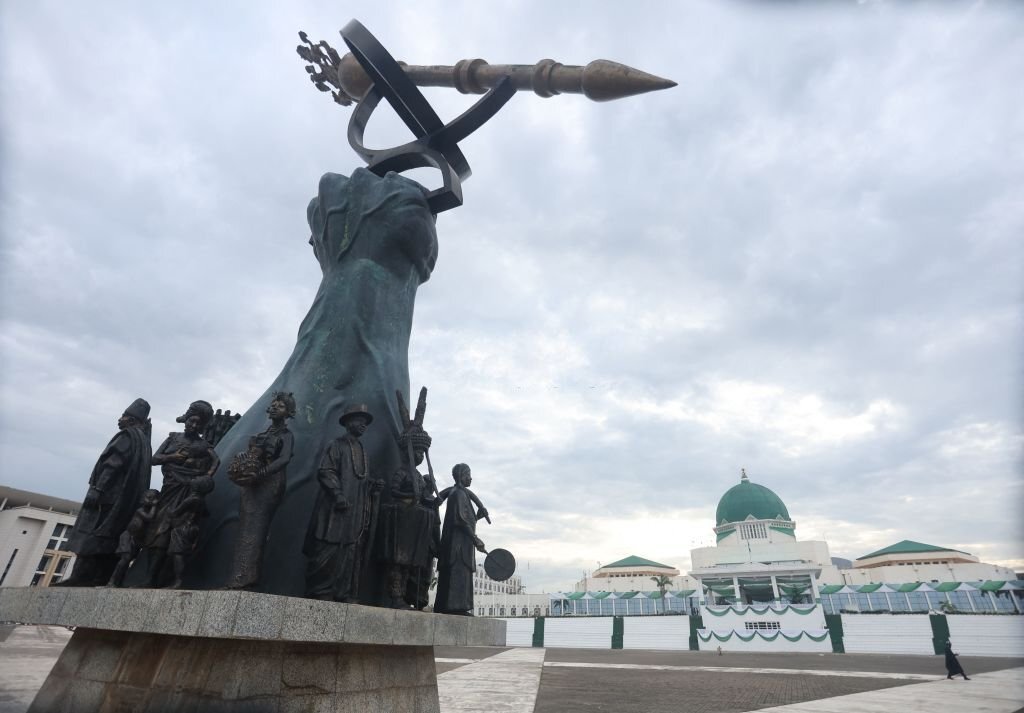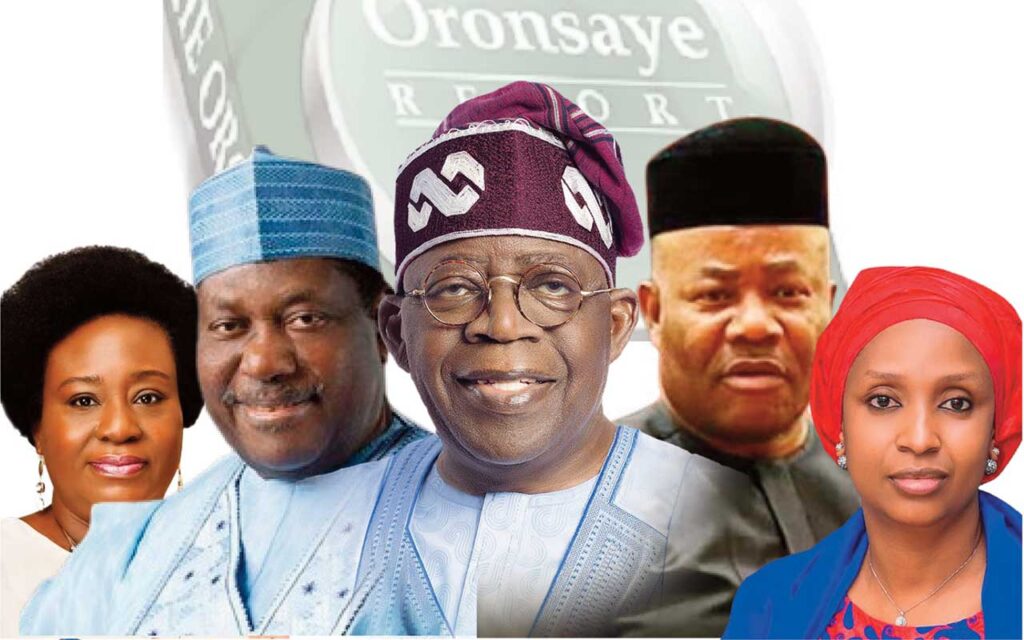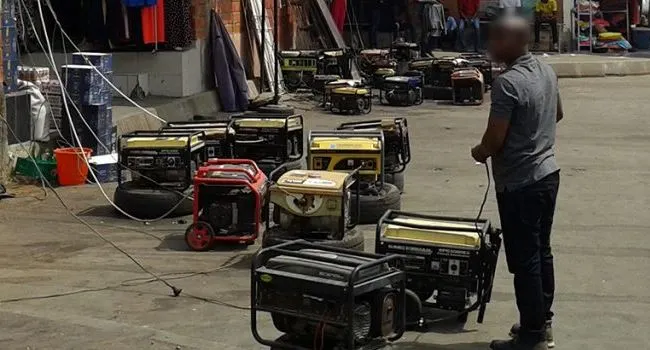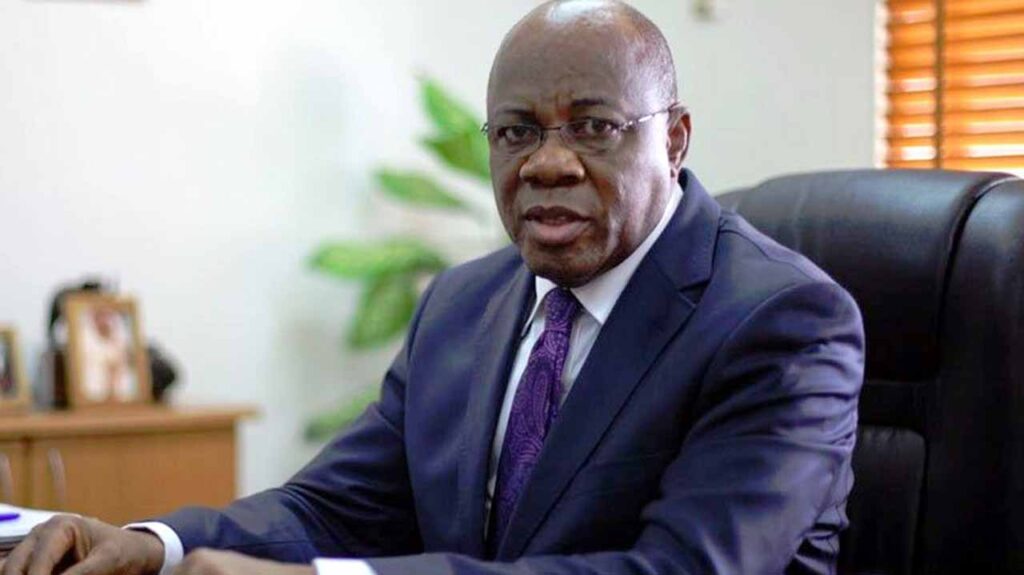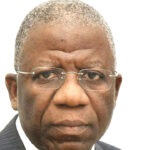
President Bola Tinubu on Monday approved the implementation of the long-shelved Stephen Oronsaye Report, a move aimed at reducing the size and cost of the federal government.
The Oronsaye report, submitted in 2012, recommended the merger or closure of several government agencies to cut costs and improve efficiency. However, previous administrations failed to implement its recommendations fully.
The Oronsaye report, formally titled “Cost of Governance: Adjusting the Structures,” was commissioned by the Goodluck Jonathan administration in 2011.
The committee, in its report, recommended that of the 541 Statutory and Non-Statutory Federal Government Parastatals, Agencies and Commissions, 263 statutory agencies should be reduced to 161, 38 agencies should be abolished, 52 agencies should be merged, and 14 should revert to departments in ministries.
Presidential spokesperson Bayo Onanuga in a statement said the implementation means that “many agencies will be scrapped and many others will be merged to a leaner government.”
Agencies to be scrapped
The federal government announced that the Pension Transitional Arrangement Directorate (PTAD) would be scrapped and functions transferred to the Federal Ministry of Finance
The National Senior Secondary Education Commission (NSSEC) is to be scrapped and functions transferred to the Department of Basic and Secondary Education in the Federal Ministry of Education.
Agencies to be merged
1. The National Agency for the Control of Aids (NACA) is to be merged under the Centre for Disease Control in the Federal Ministry of Health.
The Oronsaye report argues that there is no special value being added by NACA that the Centre for Disease Control in the Federal Ministry of Health cannot handle.
2. The National Emergency Agency (NEMA) is to be merged with the National Commission Refugee, Migration and Internally Displaced Persons (NCFRMI).
According to the Oronsaye report, NEMA officials are not always the first responders at disaster sites, and when they do arrive, they are typically ill-equipped and clueless.
Notwithstanding, it suggests that the agency should be allowed to learn and improve on its performance, stating that the agency should be strengthened and the rejection is in order.
3. The Directorate of Technical Cooperation in Africa (DTCA) is to be merged with the Directorate of Technical Aid (DTAC) and function as a department in the Ministry of Foreign Affairs.
In contrast, the Oronsaye report proposes the abolition of DTCA and the transfer of its functions, along with those of the Technical Aids Corps, to a suitable department within the Ministry of Foreign Affairs.
Furthermore, the report suggests that funding for the DTCA as an agency should cease from the beginning of the 2013 Fiscal Year.
4. Infrastructure Concession and Regulatory Commission (ICRC) to be merged with the Bureau for Public Enterprise (BPE).
The Oronsaye report highlights that BPE already possesses institutional knowledge and expertise in managing public-private partnerships, which includes the privatisation and commercialization of public enterprises.
The report asks, “Why create another agency just for infrastructure concessions, when BPE can effectively and efficiently handle the issue?”
5. The Nigerian Investment Promotion Commission (NIPC) is to be merged with the Nigerian Export Promotion Council (NEPC).
According to the Oronsaye report, NIPC is tasked with encouraging investment, particularly foreign direct investment. Meanwhile, NEPC is responsible for developing and diversifying exports.
It noted that there is a linkage between the two issues. Apart from saving overhead,
costs, the merger has the potential to make the resultant organisation more efficient and effective.
6. National Agency for Science and Engineering Infrastructure (NASENI) to be merged with National Centre for Agriculture Mechanization (NCAM) and Project Development Institute (PRODA).
Meanwhile, the Oronsaye report recommended repealing the enabling legislation for the Centre for Management Development (CMD) and closing it down.
According to the report, other technological research and development institutions could absorb CMD’s work without incurring the overhead expenses associated with maintaining the center.
The report also questioned the value the CMD has added since its inception, saying “Pray, what value has the Centre added since inception?”
7. The National Biotechnology Development Agency (NABDA) is to be merged with the National Centre for Genetic Resources and Biotechnology (NACGRAB).
The Oronsaye report said it was opposed to the funding caveat from the proposed National Research Development Fund, which is to be established to coordinate research funding issues.
The committee noted that It is contradictory that a government that wants to cut down the cost of governance instead of merging an agency established by executive fiat (NABDA) is directing that its establishment be backed by law
8. The National Institute for Leather Science Technology (NILEST) is to be merged with the National Institute for Chemical Technology (NARICT).
According to the Oronsaye report, amalgamation is subject to a funding caveat from the proposed National Research Development Fund, which will be established to coordinate research funding issues.
9. The Nomadic Education Commission (NEC) is to be merged with the National Commission for Mass Literacy, Adult Education and Non-Formal Education.
Contrary to this, the Oronsaye report proposes transferring the responsibilities of the Nomadic Education Commission (NEC) and the National Commission for Mass Literacy, Adult and Non-Formal Education to the Universal Basic Education Commission (UBEC).
This recommendation stems from the recognition that nomadic education, adult literacy, and non-formal education can be effectively integrated into UBEC’s mandate. These educational initiatives are all related to providing basic education, and consolidating them under a single entity would streamline operations and enhance efficiency.
10. Federal Radio Corporation (FRCN) to be merged with Voice of Nigeria (VON)
According to the Oronsaye report, the proposed merger of broadcasting agencies is expected to yield substantial cost savings by aligning with best practices observed in other jurisdictions.
The committees involved in the assessment noted that these agencies are primarily focused on broadcasting, and the division among them is essentially a minor distinction.
The merger would not only reduce overhead and personnel costs but also leverage the efficiencies inherent in large-scale operations.
11. The National Commission for Museums and Monuments is to be merged with the National Gallery of Arts.
According to the committee’s assessment, the two institutions are related; the marriage will be peaceful and productive.
12. The National Theatre is to be merged with the National Troupe of Nigeria.
The Oronsaye report says the National Troupe and the National Theatre can be merged since their functions are similar and can be managed under one agency.
13. The National Metallurgical Development Centre (NMDC) is to be merged with the National Metallurgical Training Institute (NMTI).
But in the Oronsaye report, the committee recommends that both the National Metallurgical Development Centre and the National Metallurgical Training Institute be scrapped and the relevant enabling laws repealed, while their funding should cease no later than December 31, 2012.
The report noted that these institutions are at the heart of the much hoped-for industrial revolution and they ought to be reenergized and their funding increased.
14. The Nigerian Army University (NAUB) and the Airforce Institute of Technology (AFIT) should be merged into the Nigerian Defence Academy (NDA).




